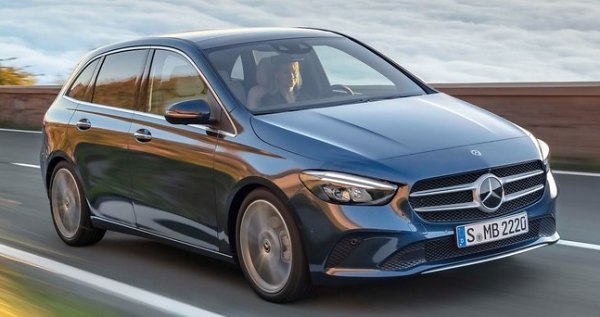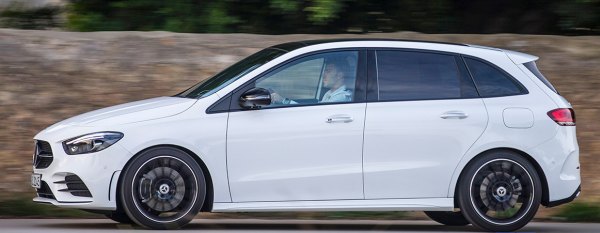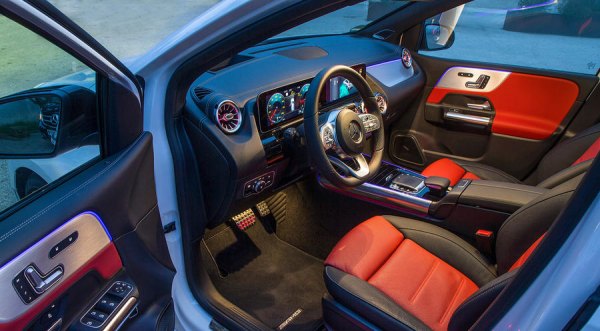Published
on 21
Dec 2018
|
All rights reserved.
|
|

|
|
A
tall-body A-class
|
|
Last year, Mercedes built
620,000 compact cars based on its MFA2 front-wheel-drive platform. It
is considered to be a success and a crucial factor for Stuttgart to
leapfrog Munich to take the sales crown of premium brands. Among the
compact cars, A-class is a conventional hatchback or small sedan,
B-class is a tall-body MPV, CLA is a 4-door coupe and GLA is an SUV
crossover. It is a very complete line-up, covering all kinds of drivers
that might purchase a relatively affordable compact car. However, not
all of them have a bright future. The B-class lands in a shrinking
segment which was pioneered by Renault Scenic in 1996, whose European
sales peaked in 2005 and has dropped by nearly half since then. The
cause? SUV again! Nevertheless, the German premium brands come late to
the party. They have invested a lot to build the nameplates – not only
Mercedes B-class but also BMW 2-Series Active Tourer – so I don’t think
they will give up any time soon, at least not without a struggle. To
Mercedes, a way to make the new B-class profitable is to limit its
engineering expenses. This means it has to share high percentage of
components with the A-class and other sisters.
Unsurprisingly, the 3rd generation B-class continues to ride on the
A-class platform, now called “MFA2”. A Renault Scenic shares its
underpinnings with Megane, while a Citroen C4 Picasso shares the EMP2
platform with PSA large cars. That’s the common practice of the
industry to save money. However, unlike its rivals, the B-class differs
very little from its sisters. It has exactly the same length, width and
wheelbase as the A-class hatchback, just differing from the latter by
an extra height of 122mm. In addition to the same chassis and
powertrains, and the fact that it offers only 5-seat accommodation, it
is fair to say the new B-class is virtually a tall-body version of the
A-class.

|
|
Almost
everything is taken from the A-class. Unfortunately, not including the
"250" engine.
|
|
That has its pros and cons. On the positive side, this means the
B-class has a rounded mechanical package. Like its sibling, it is
powered by one of the 5 sophisticated downsized engines, i.e.
1.33-liter petrol turbo with 136hp (B180) or 163hp (B200), 1.5-liter
(Renault-sourced) turbo diesel with 116hp (B180d) or Mercedes’ own 2.0
turbo diesel with 150hp (B200d) or 190hp (B220d). The petrol and
smallest diesel engines are paired with 7-speed DCT, while the torquey
2-liter diesel mates with a new 8-speed DCT. As for the chassis, it
follows the A-class to use torsion-beam rear axle for cheaper models,
while more powerful engines or optional adaptive dampers are mated with
a 4-link rear suspension. Most important, the new chassis is much
stiffer and NVH engineering is far more accomplished than the old car,
which was underwhelming. Outside, although the body shell looks boring,
the design is neat and refined, and it achieves an incredibly low Cd of
0.24.
As a result, on the road the new B-class drives better than the old
one. It is generally a refined car, although on larger wheels it
struggles a little to smooth out bumps. As the suspension setting is
stiffer than its French rivals, the body control is respectable for a
tall MPV. The steering is precise but light and numb, more numb than
the A-class. The car offers good grip and its handling is predictable,
but there is little reward to push it in the twisty, unlike a Ford
C-Max or Golf SV.
Likewise, the powertrain is competent but not outstanding. The 1.33
petrol motor offers good mid-range torque to suit the needs of daily
commute, but if you push it harder to beyond 4000rpm, it will struggle
with a coarse soundtrack. The 2-liter diesels are better, punchier and
more refined, but they are also more expensive, and some markets no
longer tolerate with diesel. I don't quite understand why Mercedes
refuses to offer its 224hp "250" petrol motor to this car.

|
|
Slimmer
dash and door panels extract more space out of the same footprint.
|
|
The highlight of the B-class has to be its interior. As in so many
latest Mercedes, it feels classy, looks stylish and is finished up to
very high-quality standards. However, to get the best of it you need to
invest more in extras, like the twin-10.25-inch TFT instrument and
console infotainment system, leather and alloy trims and multi-function
steering wheel. Compared with the A-class, you sit higher in the cabin,
like most MPVs. Outward visibility is excellent, but you cannot see
where the nose of the car located. There is vast of headroom, and
despite the same wheelbase, it affords more legroom to satisfy
six-footers at both rows due to the more upright seats. Moreover, the
B-class’ dashboard protrudes less into the cabin and door panels are
slimmer, so it is able to extract more space from the same footprint.
What it falls out is cabin versatility. A typical MPV these days should
have 3 individual rear seats that may split, fold, slide and recline
independently. It should also have a flat load bay once the rear seats
are folded. A lot of storage cubbies and fold tables are also becoming
the norm. Moreover, if you have a larger family, you may opt for 3 rows
or 7 seats on a C4 Picasso, Scenic or C-Max. Unlike them, the Mercedes
B-class has none of these attributes. Its rear seat is only
40/20/40-split. It may slide or recline, but when it is folded, the
load bay is not flat. Moreover, its luggage space is the smallest of
all, measuring only 455 liters or 1540 liters when the rear seat is
folded. In fact, smaller the last B-class.
All these findings prove that the Mercedes compact MPV is no more than
a tall-body version of the A-class hatchback. It remains to be seen how
many customers will find its extra space alone justify the loss of
style and dynamics compared with its sister car.
|
Verdict:    |
|